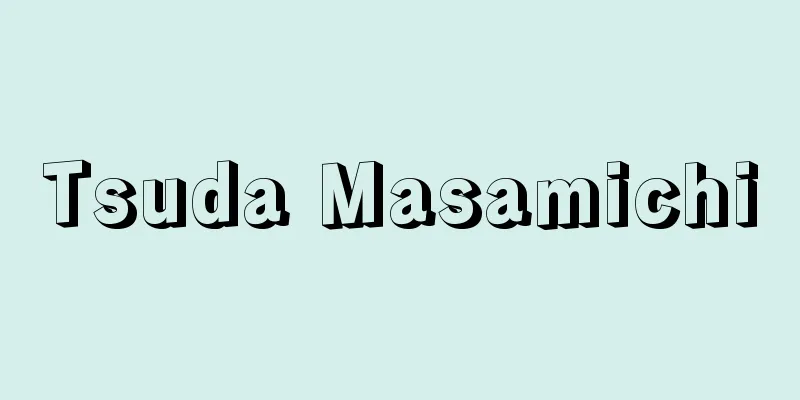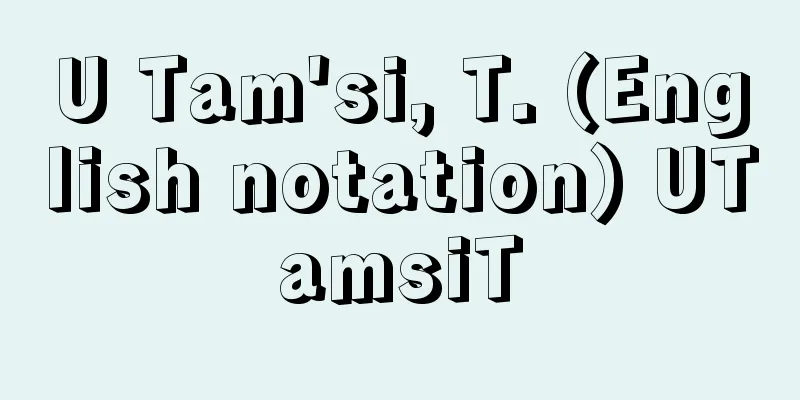Tsuda Masamichi

|
Enlightenment thinker and scholar of Japanese law. A feudal lord of Tsuyama Domain in Mimasaka Province (Okayama Prefecture). His childhood names were Kikuji and Shinichiro. In 1850 (Kaei 3), he went to Edo and studied under Mitsukuri Genpo and Sakuma Shozan, and in 1856 (Ansei 3), he became head of the Mitsukuri School. The following year, in 1857, he became assistant professor at the Bansho Shirabesho (Institute for the Investigation of Foreign Documents), and formed a friendship with his colleague Nishi Amane. In 1862 (Bunkyu 2), he went to the Netherlands to study Japanese law with Nishi and others, and studied under Professor Simon Vissering (1818-1888). He returned to Japan in 1865 (Keio 1). The following year, in 1866, he became a professor at the Kaiseijo together with Nishi Amane, and translated Vissering's lecture "National Law Theory" and submitted it to the shogunate. After the Meiji Restoration, he served in the Meiji government and was involved in the development of legal affairs, including participating in the compilation of the "New Code of Law." He then served as Vice-Minister of Foreign Affairs in 1871 (Meiji 4), Chief Justice in 1872, Chief Justice of the Army in 1873, Councillor in the Senate in 1876, and High Court Judge in 1885. When the National Diet was established in 1890, he was elected to the House of Representatives and elected as its Vice-Speaker. He was a member of the House of Peers in 1896, and was made a baron in 1900 (Meiji 33). During this time, he participated in the formation of the "Meirokusha" (Meiji Society) in 1873 (Meiji 6), and was very active in critical commentary. Tsuda's forte as an Enlightenment thinker was in rejecting the non-earthly teachings of Buddhism based on the law of causality and the doctrines of Confucianism based on idealistic normativity, and presenting a utilitarian view of humanity that positively affirms the fulfillment of human desires and the pursuit of happiness. Behind this view of humanity was a deep interest in freedom of the mind. A considerable number of the essays he contributed to Meiroku Zasshi (Meiji Roku Zasshi) argued that the "right to freedom" is an "inherent legitimate right," and that in order to modernize the nation, it was essential that freedom of the press and expression be guaranteed and that each citizen be "free and autonomous." These were examples of Tsuda's work as an Enlightenment thinker. [Kazuhisa Tashiro September 16, 2016] "Complete Works of Meiji Literature 3: Meiji Enlightenment Thought" edited by Toshiaki Okubo (1967, Chikuma Shobo) "Nishi Amane and Tsuda Shindo" by Tsuneo Hori (included in "History of Meiji Economics" 1935, Kobundo) [Reference items] | | | | |©Shogakukan Library "> Tsuda Masamichi Source: Shogakukan Encyclopedia Nipponica About Encyclopedia Nipponica Information | Legend |
|
啓蒙(けいもう)思想家、国法学者。美作国(みまさかのくに)(岡山県)津山藩士。幼名を喜久治、真一郎と称した。1850年(嘉永3)江戸に出て箕作阮甫(みつくりげんぽ)、佐久間象山(さくましょうざん)に学び、1856年(安政3)箕作塾塾頭格となる。翌1857年蕃書調所(ばんしょしらべしょ)教授手伝並となり、同僚の西周(にしあまね)と親交を結ぶ。1862年(文久2)西らとともにオランダに留学、フィセリングSimon Vissering(1818―1888)教授について国法学を学ぶ。1865年(慶応1)帰朝。翌1866年西周とともに開成所教授職となり、フィセリング講義『国法論』を訳して幕府に提出した。維新後は明治政府に出仕し「新律綱領」の編纂(へんさん)事業にあずかるなど法律面の整備に従事したのち、1871年(明治4)外務権大丞(ごんのだいじょう)、1872年大法官、1873年陸軍大丞、1876年元老院議官、1885年高等法院裁判官などを歴任した。1890年の国会開設にあたり衆議院議員に当選し副議長に選出された。1896年貴族院議員、1900年(明治33)男爵に列せられた。この間、1873年(明治6)の「明六社(めいろくしゃ)」の結成に参加し、旺盛(おうせい)な評論活動を展開した。啓蒙思想家としての津田の本領は因果律に基づく仏教の非現世的教えや、観念的な規範主義に基づく儒教の教説を排して、人間の欲望の充足や幸福の追求を積極的に肯定する功利主義的人間観を提示した点にあった。こうした人間観の背後には精神の自由に対する深い関心があった。『明六雑誌』に寄稿したかなりの数の論文は、「自由の権」は「固有の正権」であることを述べ、国家の近代化のためには出版・表現の自由を保障して国民それぞれが「自主自由」であることが肝要であると説くなど、啓蒙思想家として躍如たるものがあった。 [田代和久 2016年9月16日] 『大久保利謙編『明治文学全集3 明治啓蒙思想集』(1967・筑摩書房)』▽『堀経夫著『西周と津田真道』(『明治経済学史』所収・1935・弘文堂)』 [参照項目] | | | | |©小学館ライブラリー"> 津田真道 出典 小学館 日本大百科全書(ニッポニカ)日本大百科全書(ニッポニカ)について 情報 | 凡例 |
<<: Ivy leaves at Utsunoya Pass - Ivy leaves at Utsunoya Pass
Recommend
Ogiebushi
A type of shamisen music. It was originally a sch...
SDRAM - SDRAM
A synchronous DRAM. The system clock and external ...
Calcium Nitrate - Calcium Persea
Ca(NO 3 ) 2 (164.09). When calcium carbonate is d...
Han Chin Shu - Kanchinsho
...The book is divided into 17 sections, includin...
Integration by parts
From the formula for finding the derivative of the...
Constable - Doushin
In the Kamakura period, it meant a reinforcement ...
Anatolepis
…a general term for fishes with hard exoskeletal ...
Alba Longa (English spelling)
The oldest city in ancient Latium, located 19 km s...
Katakura Silk Mills
…In 1895, the family formed an anonymous associat...
Rochea
…The representative genus Crassula has 200 specie...
Resting Metabolism
→ Resting metabolic rate Source: Asakura Publishin...
Tarantula nebula (English spelling)
…Both galaxies have an abundance of gas, and new ...
Neapolitan School (English: Scuola Napolitana)
These opera composers were active mainly in Naple...
Pine heart moth - Dioryctria sylvestrella
An insect of the family Pyralidae in the order Lep...
Oumi Island
A floating island in the northwest of Yamaguchi Pr...









